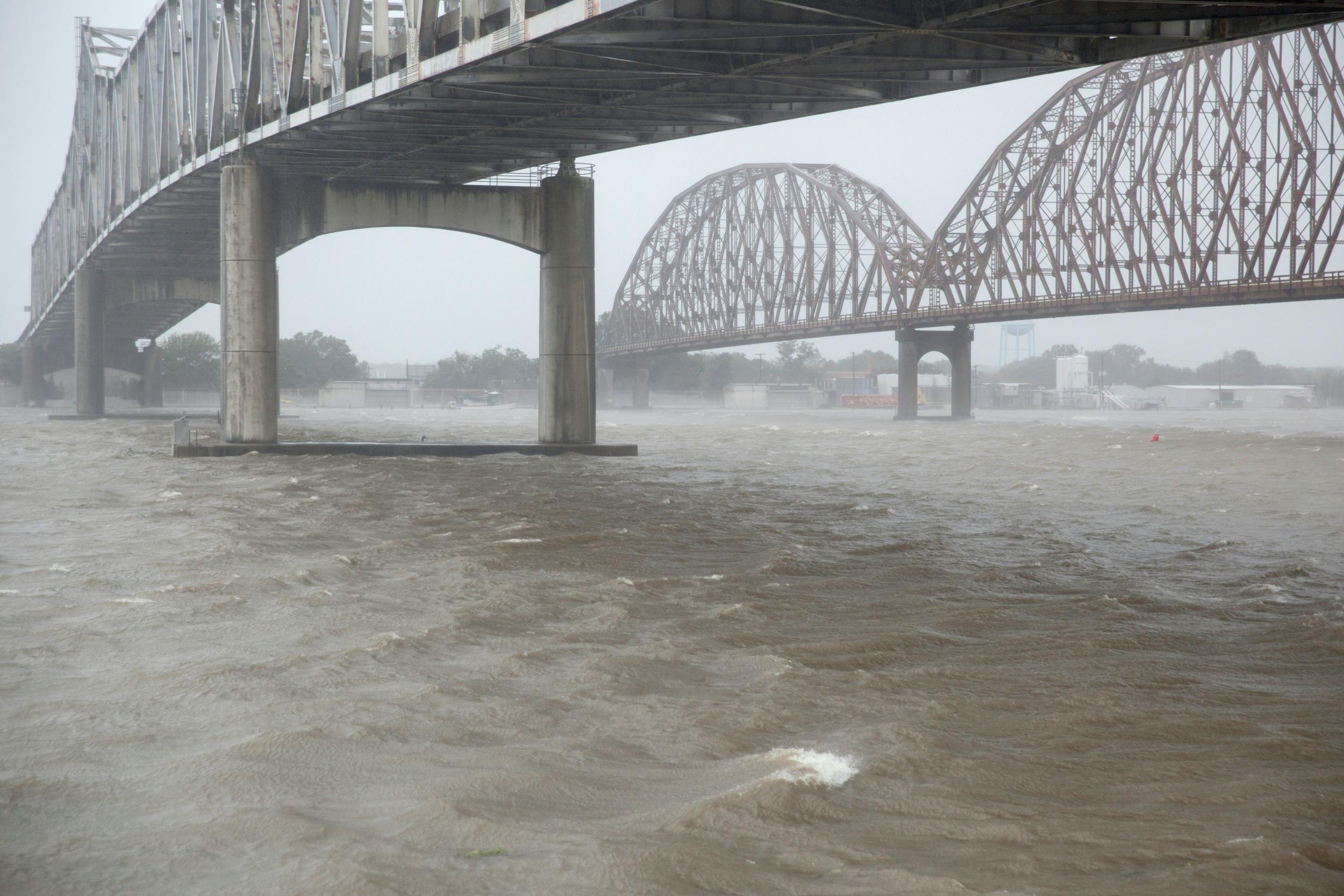Storm Barry: New Orleans braces for floods and rains as thousands in Louisiana without power
Reports that levees on the Mississippi River had overtopped, or were about to, are quickly quashed by state governor
Your support helps us to tell the story
From reproductive rights to climate change to Big Tech, The Independent is on the ground when the story is developing. Whether it's investigating the financials of Elon Musk's pro-Trump PAC or producing our latest documentary, 'The A Word', which shines a light on the American women fighting for reproductive rights, we know how important it is to parse out the facts from the messaging.
At such a critical moment in US history, we need reporters on the ground. Your donation allows us to keep sending journalists to speak to both sides of the story.
The Independent is trusted by Americans across the entire political spectrum. And unlike many other quality news outlets, we choose not to lock Americans out of our reporting and analysis with paywalls. We believe quality journalism should be available to everyone, paid for by those who can afford it.
Your support makes all the difference.Hurricane Barry has made landfall in Louisiana where it quickly weakened to a tropical storm, but its 70 mph winds, falling later to 65mph, were still expected to test flood-prevention efforts implemented after Hurricane Katrina devastated New Orleans 14 years ago.
More than 100,000 people are without power in the area, and storm surges are predicted, but reports that levees on the Mississippi River had overtopped, or were about to, were quickly quashed by governor John Bel Edwards.
“No Mississippi River levee has been overtopped, and not a single levee in the state of Louisiana - as of right now - has failed or breached,” he said.
The coastguard said it remained concerned despite the weather event being downgraded.
“It remains a very dangerous storm, particularly with regards to the amount of water that could be dropped in those areas with full river basins,” Rear Admiral Paul Thomas said.
The National Hurricane Centre has warned of a storm surge, heavy rains and strong winds.
Director Ken Graham said that Barry had gathered “a big slough of moisture” as it crept slowly towards land, and was expected to dump rain on the area throughout the weekend.
Three Waffle House locations in Barry’s path are closed – one of the factors the Federal Emergency Management Agency (Fema) uses to determine how bad a storm is.
When a Waffle House shuts down, federal officials assess that the community took a significant hit.
Flood defences have been beefed up since Katrina, which left much of the city underwater and killed more than 1,800 people in 2005.
All the levees in the system built to contain the lower Mississippi river, which winds through the heart of New Orleans, have been closed for the first time since Katrina.

A coastal storm surge into the mouth of the Mississippi had been expected to push its crest to 19ft (5.8m) in New Orleans, the highest level since 1950 and dangerously close to the top of the city’s floodgates.
But while street flooding seemed probable, the US Army Corps of Engineers insisted that any breaching of the 20ft-tall levees was unlikely as the surge size was revised downward.
New Orleans’ mayor urged residents not to let their guard down as Barry weakens and moves farther inland. LaToya Cantrell said they were “not out of the woods with this system”.
Forecasters had worried that flooding rains from the storm would start hitting the city as early as Friday night. But Saturday was largely calm in New Orleans. There were intermittent bands of rain and gusty winds, but no flooding as of Saturday evening.
However, water did come over the top of levees in Terrebonne and Plaquemines parishes.
Barry is the first hurricane of the 2019 Atlantic hurricane season and the 50th hurricane to make landfall in Louisiana since records began in 1851.
Authorities had urged people to secure property, stock up on supplies, and shelter indoors, but many opted to flee.
Mandatory evacuations were ordered in outlying coastal areas beyond the protection of levees.
Oil and gas operators had to evacuate hundreds of platforms and rigs in the Gulf of Mexico to escape the storm.
More than 42 per cent of manned platforms have been evacuated, with nearly 70 per cent of Gulf oil production and 56 per cent of gas production turned off on Saturday.

Join our commenting forum
Join thought-provoking conversations, follow other Independent readers and see their replies
Comments